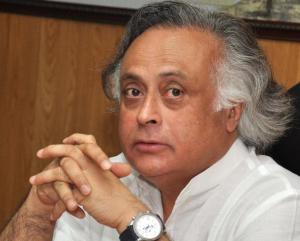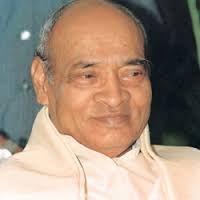Tags
This is the final installment of the three part series on the economic reforms of 1991
A Race Against Time
As we saw in the previous articles, newly sworn-in Prime Minister PV Narasimha Rao and his cabinet were confronted by the humiliating prospect of a sovereign default. The Prime Minister and his team averted the crisis by devaluing the currency and announcing what was effectively a new trade policy.
However, the crisis had only been postponed. India’s economy was not yet out of the woods. The reforms proposed by Yashwant Sinha and his team, which should have been unveiled in March, still remained only on paper. With financial institutions like the IMF and the world bank ruling out any further aid until the reforms were enacted, time was rapidly running out for Narasimha Rao & co.
Tentative Steps
On 9th July 1991 PV Narasimha Rao informed the Congress Parliamentary Party (consisting of Congress members in Lok Sabha and Rajya Sabha) that he would soon announce comprehensive changes to the industrial policy. Rao astutely avoided getting into the details to preclude any opposition at such an early stage.
Three days later- on Friday, 12th July- an article titled ‘Industrial Licensing To Go’ appeared in Hindustan Times. The article laid out the general contours of the proposed new industrial policy. Reading the article, Jairam Ramesh, who understandably feared that he would be blamed for the leak, rushed to the Prime Minister’s Office to clarify the situation with his boss.

Jairam Ramesh
To his astonishment, Ramesh was informed (off the record), that the leak had been perpetrated by Rao himself to test the waters before a note on the New Industrial Policy was to be presented the following Monday. The moment of truth was round the corner.
The Opposition Within
On Monday, 15th July the note on the new industrial policy was presented before the cabinet, as a preliminary to the cabinet meeting on Friday, the 19th. As expected, it ran into hostile opposition from within the Congress, led by Arjun Singh and ML Fotedar. To the party’s old guard, the new industrial policy amounted to turning the back on the economic vision of Nehru and Indira Gandhi. The draft industrial policy was plain unacceptable.
Given the fact that his government did not have a clear majority and that Rao’s own position within the party was far from comfortable, that should have been the end of the matter. But the wily Rao, whom Atal Bihari Vajpayee described as his ‘Guru Ghantal’ (master of guile) still had a trick or two up his sleeve. At his behest, Commerce Minister P Chidambaram instructed his team to find at least one paragraph from the speeches of Nehru, Indira Gandhi and Rajiv Gandhi, to link the proposed reforms with the past.
On Tuesday, 23rd July the policy was presented once again, unaltered in substance, but with a lengthy preamble linking the document with the vision of past leaders. As if by miracle, the opposition completely melted away. ML Fotedar, one of the most vehement opponents of the reforms hitherto, famously told the Prime Minister
आपने तो कमाल कर दिया (you’ve done magic)
The stage was set for the drama of 24th July.
An Unremarkably Historic Moment
Until 1991, foreign investment in Indian companies was restricted to just 40%, subject to government approval (except for a handful of sectors, 100% foreign investment is permitted in today, without prior approval). Besides, the Monopolies and Restrictive Trade Practices Act (MRTP) gave the government absolute authority to curtail expansion and acquisitions. The MRTP Act was a significant contributor to the economic stagnation of the 70s and 80s.

Arjun Singh (1930-2011)
Wednesday, 24th July 1991 was to be the day on which Finance Minister Dr. Manmohan Singh would present the much anticipated union budget. The Astute Rao, knowing fully well that all attention would be on the budget, decided to slip in the new industrial policy below the radar. And so around 12:50 P.M, the Minister of State for Industry PJ Kurien (true to style, Rao- who held the industries portfolio- opted to remain in the background) got up and said
Sir, I beg to lay on the table a statement on industrial policy
So unremarkable and low profile was the manner in which it was presented, that the document was passed with little resistance. In one fell swoop, the draconian industrial policies of the Indira Gandhi years had been demolished.
An Idea whose time has come
A few hours later, Finance Minister Manmohan Singh, got up from his seat in the treasury benches to deliver the now legendary budget speech. Wisely, he started the speech tipping the hat to the lately decesased Rajiv Gandhi. Next, he played up the financial crisis, stressing how double-digit inflation hurt the poorest sections the worst.
Over the course of the next few hours, Dr. Manmohan Singh demolished step by step the economic edifice built by the Congress party over four decades post-independence. Import licensing was scrapped, the peak import tariff rate was slashed, subsidies were drastically reduced. Mutual funds (hitherto a public sector monopoly) were thrown open to the private sector.
Not many realised it then, but in the short space of a few hours, the most decisive steps had been enacted to bring India out of the protectionist era. The Indian economy, shackled by a plethora of draconian laws for several decades, was brought kicking and screaming into a brave new world. The Finance Minister best summed it up paraphrasing Victor Hugo
No power on earth can stop an idea whose time has come
Aftermath
- The Indian economy grew at an average rate of 5.7% in the 1990s
- The Congress lost several state elections in the years that followed, as well as the subsequent national election in 1996
- PV Narasimha Rao would be sidelined and reduced to person non-grata by the Congress party. He passed away in 2004, a lonely and forgotten man
- Dr. Manmohan Singh got the entire credit for the reforms of ’91. He went on to become the Prime Minister of India, serving two consecutive terms between 2004 and 2014, during which some of the historic reforms he unleashed would be partially reversed
- P Chidambaram unveiled historic tax reforms in 1997 before going on to occupy several crucial portfolios between 2004 to 2014

ML Fotedar
- Jairam Ramesh would become a senior Congress leader, serving as Minister of Environment and Forests and Minister of Rural Development between 2009 and 2014
- Arjun Singh retired from active politics in 2009 before he passed away in 2011, aged 80. ML Fotedar, now retired from active politics, lives on at 84
- Prime Minister Chandra Shekhar, under whose watch the economic reforms were initiated, sank away into obscurity. He passed away in 2007 aged 80
- Yashwant Sinha, the original author of the economic reforms, would go on serve as Finance Minister in the NDA government in the late 90s. Now aged 79, he lives on in retirement
Legacy
- The economic reforms of 1991 is widely considered to be a watershed in Indian history. India’s GDP- $ 274.8 Billion in 1991- was estimated at over $ 2 Trillion in 2015
- The Indian economy is the 7th biggest in the world in absolute terms (and third biggest by Purchasing Power Parity)
- Dr. Manmohan Singh remains a widely respected figure, notwithstanding the controversies that erupted during his second term as Prime Minister

PV Narasimha Rao
- PV Narasimha Rao has been largely rehabilitated in recent years, although not by the party he served all his life. He now has a memorial in New Delhi and is widely hailed as a son of the soil in the newly created state of Telangana
- The economic growth unleashed by the reforms of 1991 led to rising aspirations among the people of India, paving the way for Narendra Modi’s historic victory in 2014 national elections
Sources
- Vinay Satpati, Half Lion, Penguin Books India (2016)
- Shankar Aiyar, P V Narasimha Rao: Accidental PM and Accidental Reforms, New Indian Express, 19th June 2016
- P.R. Ramesh, PV Narasimha Rao: The Outsider Who Dared, Open Magazine, 4th March 2016
- The World Bank’s India Economic Profile
- The 1991-92 Budget speech
